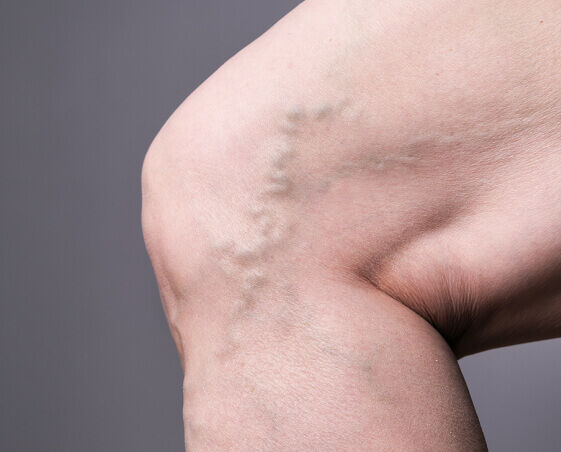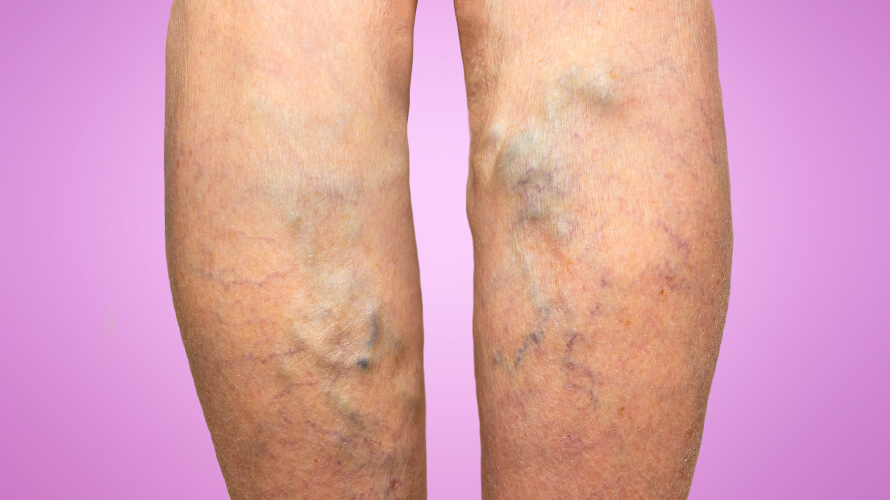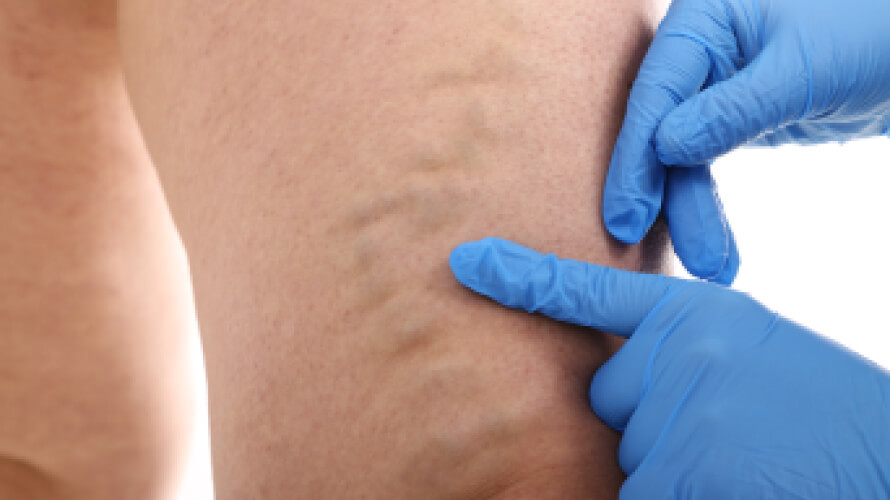Varicose Veins: Causes, Symptoms, and Treatment
Are you living with vein disease?
If you have venous insufficiency (vein disease), you understand the leg pain, swelling, aching, cramping, feelings of heaviness, and telltale twisted or bulging purple or blue leg veins. If you’ve been living with untreated vein disease long enough, you may have developed complications such as skin discoloration, leg ulcers, or a blood clot in the leg.
Click below to learn what varicose veins are, what causes varicose veins, the risk factors, the symptoms to look out for, and the treatment options for varicose veins.

What are the symptoms of varicose veins?
Visual signs of varicose veins
Visual chronic venous insufficiency symptoms typically include the appearance of swollen, twisted, dilated veins that can be seen beneath the skin. They often appear as red, dark blue, or purple cords or bulging, twisted veins, most commonly in the legs, but can also occur in other areas of the body. Skin discoloration around the veins is common.
Visible varicose veins and skin coloration may be unsightly or visually distressing to some individuals.
Non-visual signs of varicose veins
Not all symptoms of varicose veins are characterized by enlarged, twisted, and bulging veins. Some vein disease symptoms are more subjective, meaning that they are not visible to the naked eye—but are no less capable of reducing an individual’s quality of life. Both visual and non-visual symptoms should be assessed by a vein health professional.
Non-visual symptoms include:
- Pain, aching or throbbing sensation in the legs: Many people with varicose veins experience this sensation after prolonged periods of standing or sitting.
- Heaviness or fatigue in the legs: Individuals with varicose veins may feel this sensation towards the end of the day or after prolonged activity.
- Restless legs syndrome (RLS): Varicose veins can sometimes contribute to the developing or worsening of this condition, characterized by an uncontrollable urge to move the legs and other uncomfortable sensations.
- Itching or irritated skin: Caused by a condition called venous stasis dermatitis (also known as gravitational dermatitis, venous eczema, or varicose eczema), a buildup of fluid in the lower legs due to varicose veins and other circulation issues puts extra pressure on the skin and creates irritating skin inflammation.

